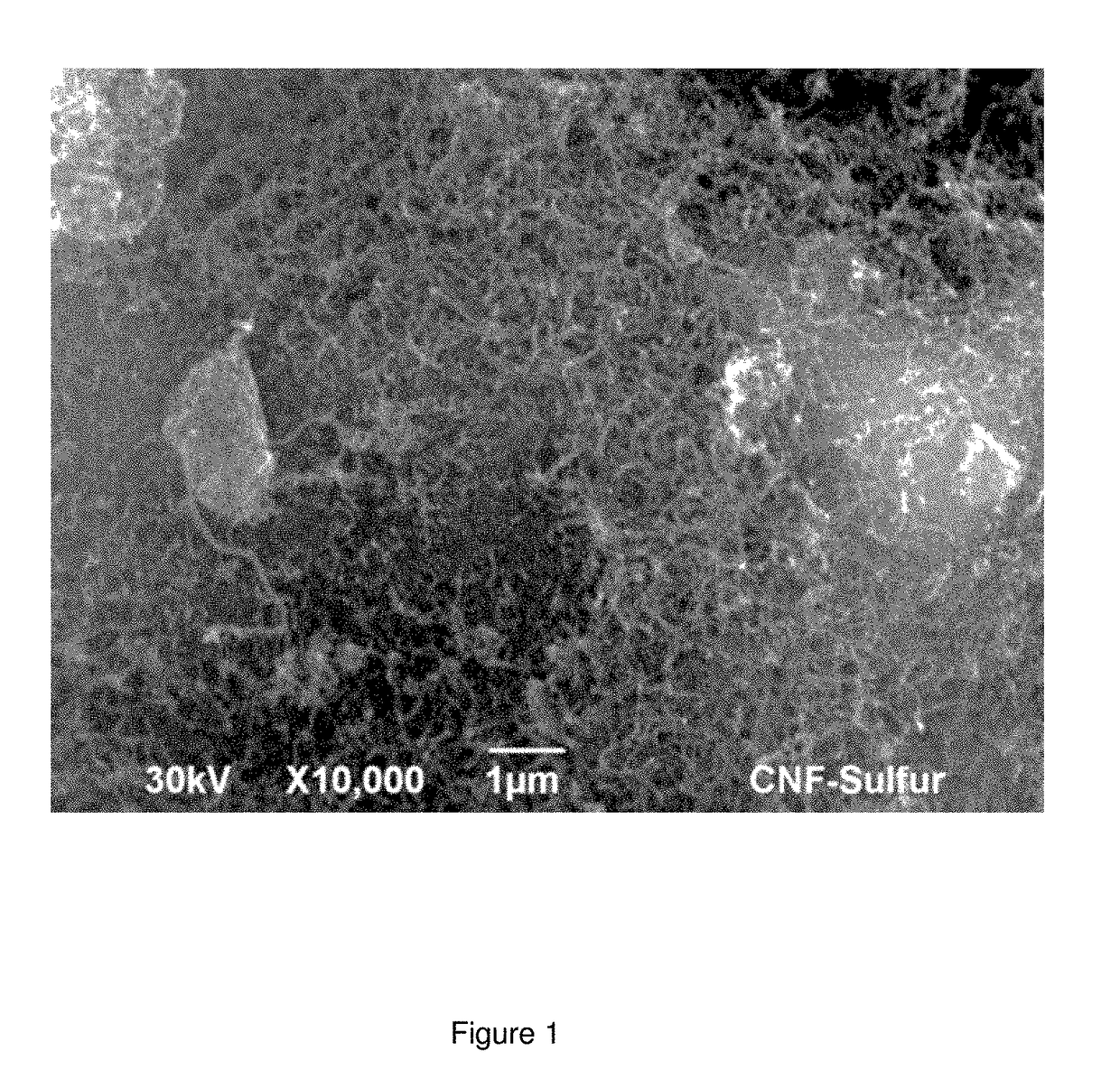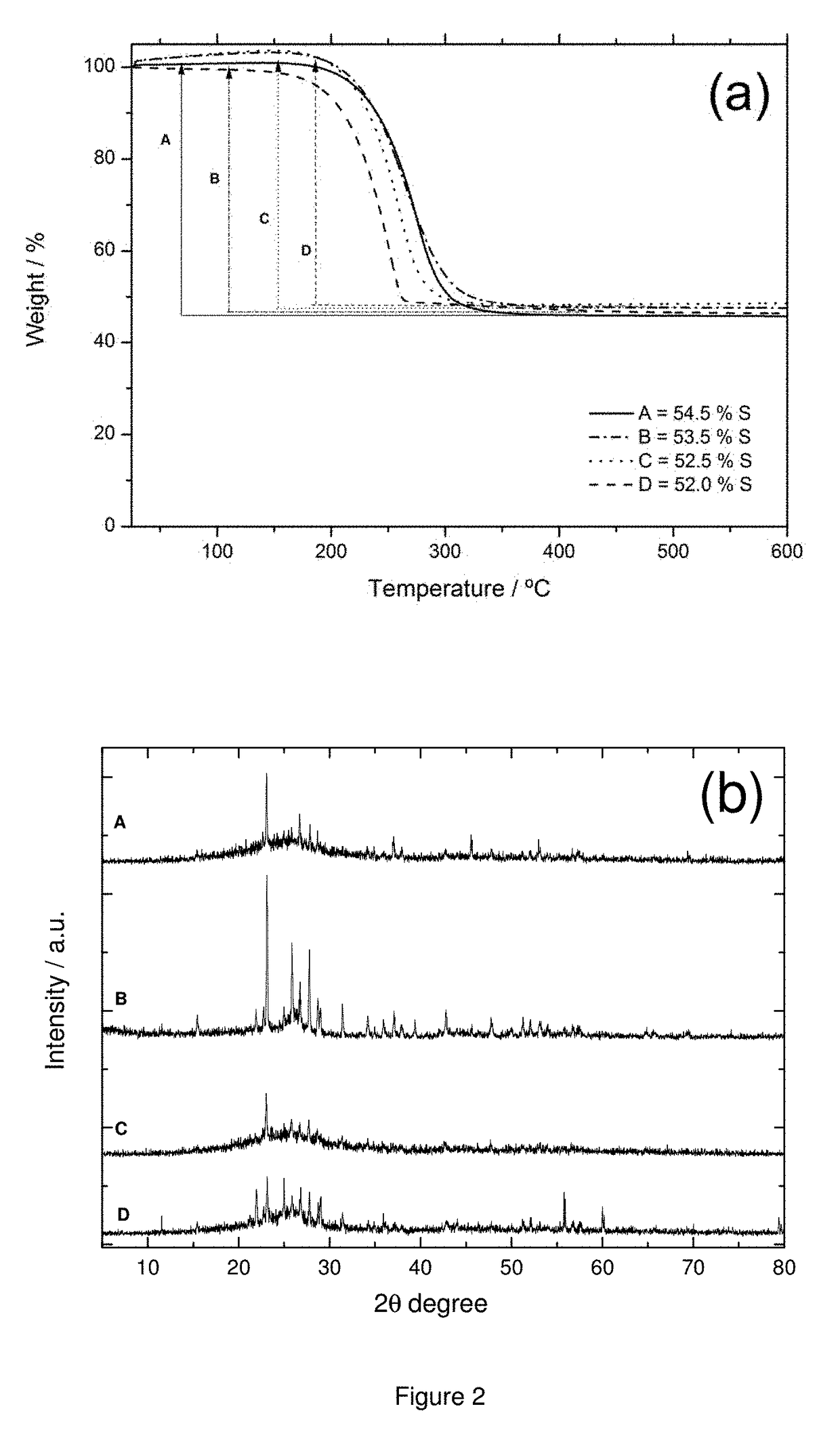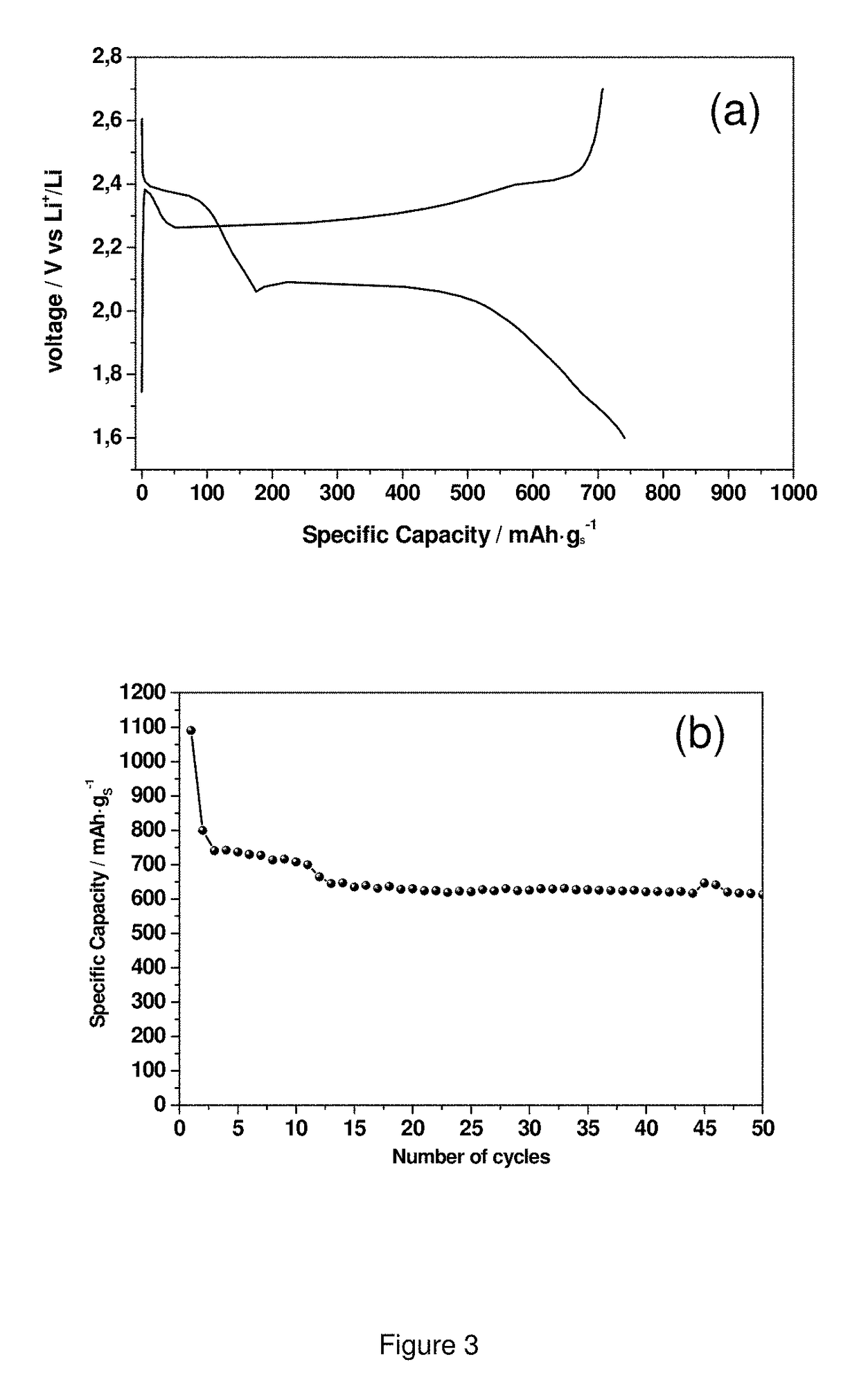Carbon composites
a composite material and carbon technology, applied in the field of composite materials, can solve the problems of low specific capacity, high cost, safety concerns, etc., and achieve the effects of high specific capacity, high durability, and high conductivity
- Summary
- Abstract
- Description
- Claims
- Application Information
AI Technical Summary
Benefits of technology
Problems solved by technology
Method used
Image
Examples
example 1
s Obtained by a Physical Method
[0136]Composites of the present invention were prepared by a physical method comprising the following steps:[0137]a) 60 g sulphur and 427 ml of carbon disulfide (CS2) are introduced in a glass vessel. The mixture is stirred at 100 rpm for 1 hour to obtain a solution of 10% w / w sulphur.[0138]b) 40 g graphene nanofibers having a diameter of 80 nm and a length between 500 nm and 2 microns are added to the mixture obtained in step a). The graphene nanofibers have a specific surface area of 300 m2 / g, an average mesopore size of 5 nm, an average micropore size of 1.5 nm, and a pore volume of 0.36 cm3 / g. About 90% the pore volume corresponds to mesopores and about 10% to micropores. The mesopores represent about 85% of the specific surface area, and the micropores about 15% of the SSA.[0139]The resulting mixture is stirred for 15 min at room temperature.[0140]c) Ultrasounds are applied to the mixture obtained in step b) for 30 minutes,[0141]d) The solvent in ...
example 2
Preparation
[0146]The electrodes are prepared by blending the composite obtained in example 1, with poly(vinylidene fluoride) (PVDF) binder, and carbon black in a weight ratio of 80:10:10 in a planetary mixer at 50 rpm for 15 min. The solids are dispersed in N-methyl-2-pyrrolidone (NMP) at a ratio of 200 g to 1 litre NMP, by stirring at a rate of 100 rpm for 24 hours.
[0147]The obtained slurry is coated on an aluminum foil of 20 μm thickness with a controlled height blade. The resulting electrode is dried by heating at 50° C. for 12 h.
[0148]The electrochemical properties of the composite obtained in example 1 are measured using coin cells. 2032 coin-type cells having 20 mm diameter and 3.2 mm thickness, are assembled in an Ar-filled glovebox by stacking the as-prepared electrode as the working electrode, with a lithium foil as the counter electrode and reference electrode, a porous polyethylene film as separator (PE); and 1M lithium bis(trifluoromethanesulfonyl)imide (LiTFSI) in 1,3-d...
example 3
s Obtained by a Physical Method
[0151]Composites of the present invention were prepared by a physical method comprising the following steps:[0152]a) 60 g sulphur and 427 ml of carbon disulfide (CS2) are introduced in a glass vessel. The mixture is stirred at 100 rpm for 1 hour to obtain a solution of 10% w / w sulphur.[0153]f) 40 g graphene nanofibers having an average diameter of 20 nm and a length between 1 microns and 10 microns are added to the mixture obtained in step a). The graphene nanofibers added to the mixture have a specific surface area of 130 m2 / g, an average mesopore size of 10 nm, an average micropore size of 1.0 nm, and a pore volume of 0.50 cm3 / g. About 95% the pore volume corresponds to mesopores and about 5% to micropores. The mesopores also represent about 95% of the specific surface area, and the micropores about 5% of the SSA.[0154]The resulting mixture is stirred for 15 min at room temperature.[0155]b) Ultrasounds are applied to the mixture obtained in step b) f...
PUM
| Property | Measurement | Unit |
|---|---|---|
| specific surface area | aaaaa | aaaaa |
| specific surface area | aaaaa | aaaaa |
| size | aaaaa | aaaaa |
Abstract
Description
Claims
Application Information
 Login to View More
Login to View More - R&D
- Intellectual Property
- Life Sciences
- Materials
- Tech Scout
- Unparalleled Data Quality
- Higher Quality Content
- 60% Fewer Hallucinations
Browse by: Latest US Patents, China's latest patents, Technical Efficacy Thesaurus, Application Domain, Technology Topic, Popular Technical Reports.
© 2025 PatSnap. All rights reserved.Legal|Privacy policy|Modern Slavery Act Transparency Statement|Sitemap|About US| Contact US: help@patsnap.com



